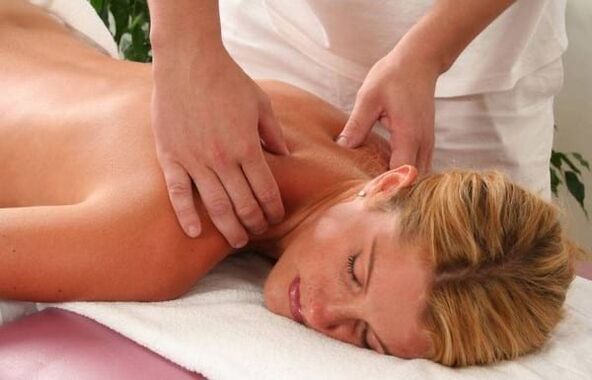
Symptoms of cervical osteochondrication may occur at any age, but the risk increases after 25 years.The faster the treatment begins, the more likely they to stop the disease in the bud and avoid unpleasant complications.
Symptoms of cervical spine osteochondry
The signs of the cervical spine at the initial stage of the disease can be lubricated, manifested in episode and not warn the patient immediately.
Osteochondria-Nothing more than the deformation of the vertebrae of a spine associated with degenerative (destructive) processes that enjoy it.
Reasons may be different:
- Constant natural overload, uneven muscle stretching, long stay in a static position (sitting on the computer, driving a car).
- Injuries to the throat;
- Inappropriate diet with domination of fat, salty, acute food.
- Abuse of alcohol and cigarettes;
- Metabolic and endocrine disorders.
In danger, people who burden heredity, overweight and patients with rheumatism.Synealing, severe anxiety, can cause exacerbation of cervical osteochondrication.
Under the influence of external or internal factors on the spine, pathological processes associated with a change in the shape and position of the vertebrae, the improvement of the cartilage and the formation of the developing bones begin.
All of this leads to stings of blood vessels and nerve endings.Brain diet is disturbed, pain and discomfort occur.
Symptoms of cervical osteochondicity include:
- Headache and dizziness.
- Weakness, prefabricated situation, fainting.
- A feeling of general adversity, weakness, constant fatigue.
- Neck pain, neck, shoulder belt, crunching when you turn your head.
At the same time, visual acuity can be reduced, heard worsens, patients complain about noise in their ears and "flies" in front of their eyes.The described symptoms are the result of the disorders of the injection.
A long-term violation of blood supply to the brain causes migraine, plant-vascular disorders, respiratory pathologies and cardiovascular system.
The vertebrae of the cervical area are extremely small in size and the throat muscles are relatively weak.The cervical spine is negatively affected by static and high physical activity.
Degree of illness
There are 4 degrees of cervical osteochondicism.Each of them corresponds to its own symptoms, but in some cases a specialist cannot only make a precise diagnosis.
- The deformation of the spine is in its infancy, cartilage and bone tissue changes are almost noticeable, the emerging symptoms are episodic.Patients associate pain and suffering with excessive work, stress, physical activity.
- The shape and height of the intervertebral disc change, its integrity can be violated.At this stage, the pain in the throat, the shoulder belt becomes constant.He can become confused, his head hurts.
- The intervertebral hernias, squeezing nerves and blood vessels, cause severe headache, weakness, dizziness, pre -level and fainting.The patient feels fatigue, pain in the back of the head, noise in the ears.
- The vertebrae are deformed, bone growths occur - the osteophytes that crumple the nerves.The vertebrae of the neighboring sections suffer, the usual movements are disturbed, their range is reduced, each movement is accompanied by severe throat, shoulder and lock.

Treatment of osteochondry
In men, cervical osteochondria is less common than in women, starts later, but the symptoms are more severe and the disease develops faster.In the first signs of the disease at home, it is necessary to start the affordable treatment:
- Daily neck exercise includes simple exercises that develop the spine and muscle appliances that improve blood circulation (circular neck rotation, shoulder slope, slope front and rear).
- Alcohol and oil compresses, salt heating pillows (cannot be used in the acute phase) will help relieve throat pain.
- To relieve the symptoms of cervical osteochondicity will help the use of drugs - spasms, painkillers, anti -inflammatory drugs.
In the first signs of degenerative deformation processes in the cervical area, you should seek medical attention.As a rule, conservative treatment is prescribed:
- physiotherapy;
- massage (necessarily - professional!);
- Taking medicines that not only relieve the symptoms of the disease, but also the contribution to the recovery of cartilage tissue - chondroprosts in tablets or injections.
Cervical osteochondria is easier to warn than to cure.
Among the precautionary measures is the rejection of harmful salty and acute food, compliance with labor status and rest, balanced physical activity.














































